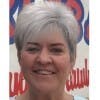Redistricting
Thanks to everyone who shared their input during the redistricting process! Your feedback helped shape the final ward map, which is now in effect. To see the updated map and check your current ward, visit: lovgov.org/WardMap
For questions, contact the City Clerk’s Office at 970-962-2000 (option 9) or email: clerk@cityofloveland.org
As the City works to update Loveland’s ward boundaries, some residents may find themselves in a different ward for the 2023 election season. This process is what’s known as redistricting, and these efforts are necessary for several reasons – but most importantly, it ensures that wards remain as equal in population as possible and allows the City to coordinate with Larimer County on local elections, making it easier for residents to vote. Redistricting is an as-needed process that usually happens after new population data is calculated through the U.S. Census Bureau.
A brief history
Loveland’s City Charter established four wards to divide the City in 1966, and nine other boundary adjustments have been made since then, with the last adjustment in 2017. In 2021, both the State of Colorado and Larimer County went through similar efforts and established new boundaries for state congressional and legislative districts as well as county precincts. As Loveland continues to grow and as boundaries expand, population data shows that Loveland’s current ward counts are off-balance - with several wards having a population difference of more than 10% – more than twice the allowed amount.
The redistricting process
The redistricting process is driven by the City Clerk’s Office with support from the Geographic Information Systems (GIS) team and is guided by the City Charter and the Municipal Code. When establishing new ward boundaries, the City needs to ensure that:
- Currently seated City Councilors remain in their same ward;
- There is no more than a 5% deviation in population between wards;
- Wards match County precincts with only one ward in each precinct;
- Wards be as compact as possible without splits;
- Wards align with natural breaks (such as roadways, neighborhoods, lakes/rivers and railroads) as much as possible.
City staff have taken necessary steps to create four possible options that meet the above criteria.
Share your voice in the process
Now through January 31, 2023, residents are invited to provide comments on the proposed options ahead of the 2023 election season. Additional information can be found in the sidebar to the right (or below on mobile devices).






